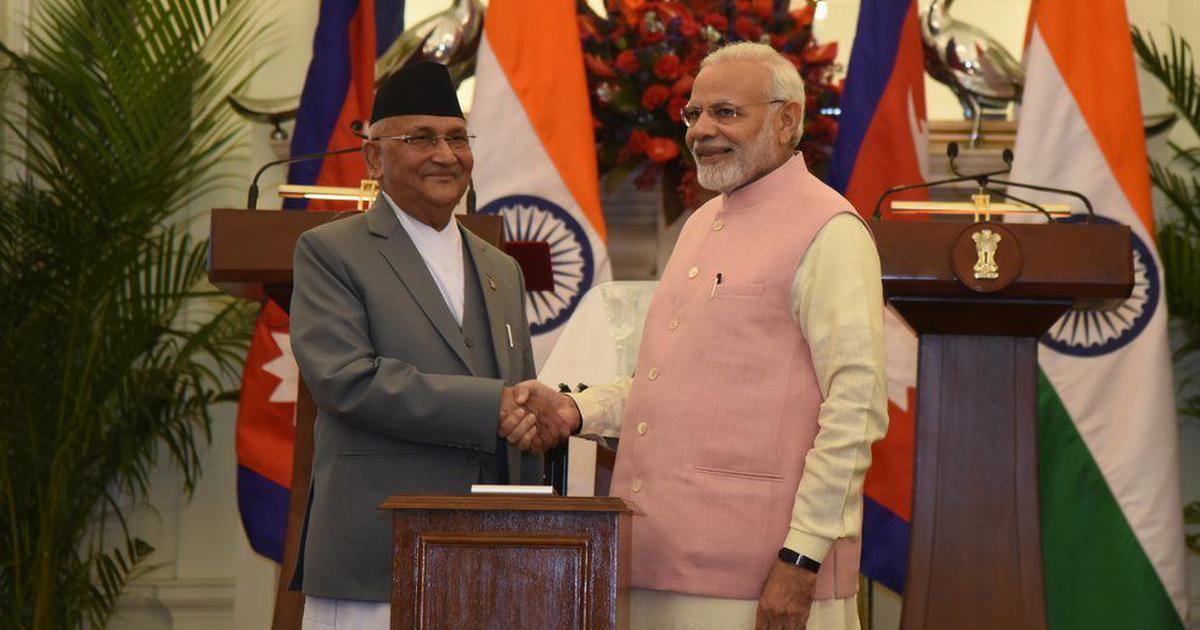Nepal PM Oli speaks to Modi for the first time after map row, wishes India on Independence Day
Prime Minister Narendra Modi thanked Oli and recalled the civilisational and cultural links that both the countries share, the MEA said.

Prime Minister Narendra Modi and his Nepalese counterpart KP Sharma Oli on Saturday held a telephonic conversation, the first since relations between both the countries took a turn for the worse over the Himalayan nation’s new political map.
“The prime minister of Nepal greeted the government and people of India on the occasion of its 74th Independence Day, and also conveyed congratulations for India’s recent election as a non-permanent member of the United Nations Security Council,” India’s Ministry of External Affairs said in a statement. “The leaders expressed mutual solidarity in the context of the efforts being made to minimise the impact of the Covid-19 pandemic in both countries. Prime minister offered India’s continued support to Nepal in this regard.”
The statement added that Modi recalled the civilisational and cultural links that both India and Nepal share and thanked Oli for his wishes.
The telephonic conversation between Oli and Modi came two days before Indian ambassador Vinay Mohan Kwatra and Nepal’s Foreign Secretary Shanker Das Bairagi are scheduled to hold talks under a bilateral framework.
Thank you PM @kpsharmaoli Ji for the Independence Day wishes. https://t.co/BGnQYPDTus
— Narendra Modi (@narendramodi) August 15, 2020
Map row
Earlier this month, the Nepal had said that it will send its political map that claimed Kalapani, Limpiyadhura and Lipulekh of Uttarakhand as part of its sovereign territory, to India, Google and the international community by mid-August. At least 25,000 copies of the new political map, which was released on May 20, have been distributed around the country.
The areas that Nepal has included in its map are at the centre of its border dispute with India. Nepal maintains that India has claimed these places by building the Darchula-Lipulekh link road despite repeated objections. India, on the other hand, has said that the road is within its territory.
After the map was launched, India had asked Nepal to refrain from using it to assert its territorial claims. It had slammed the move as an “artificial enlargement” and not based on historical facts and evidence.
Nepal first revived its claim over the areas in November after India published a new political map. This was intensified on May 8 when Defence Minister Rajnath Singh inaugurated the Dharchula-Lipulekh link road.
Also read:
- Indo-Nepal conflict and coronavirus lockdown have intensified flood threat in Bihar
- Tensions between India, China and Nepal could hinder climate research in the Himalayas









